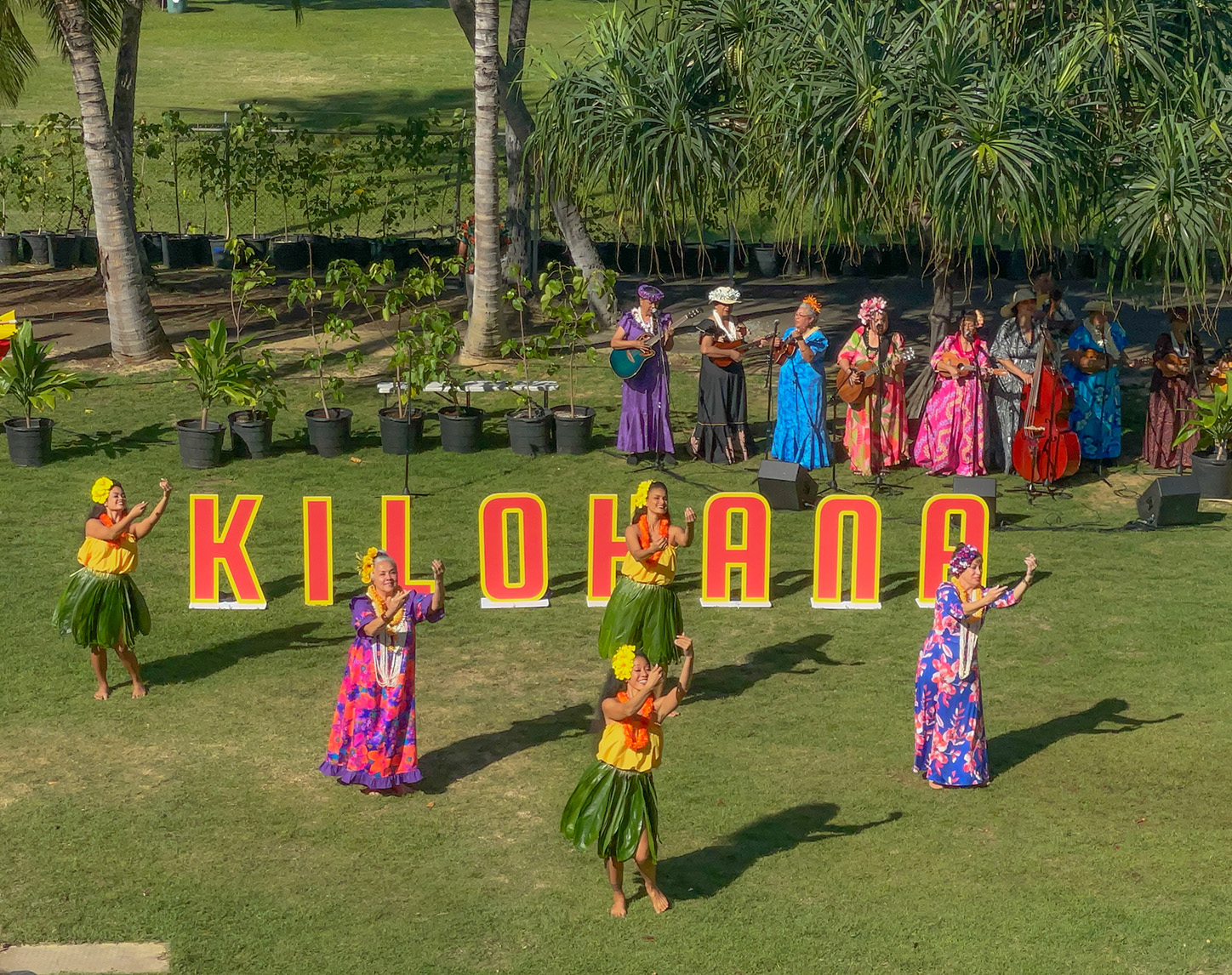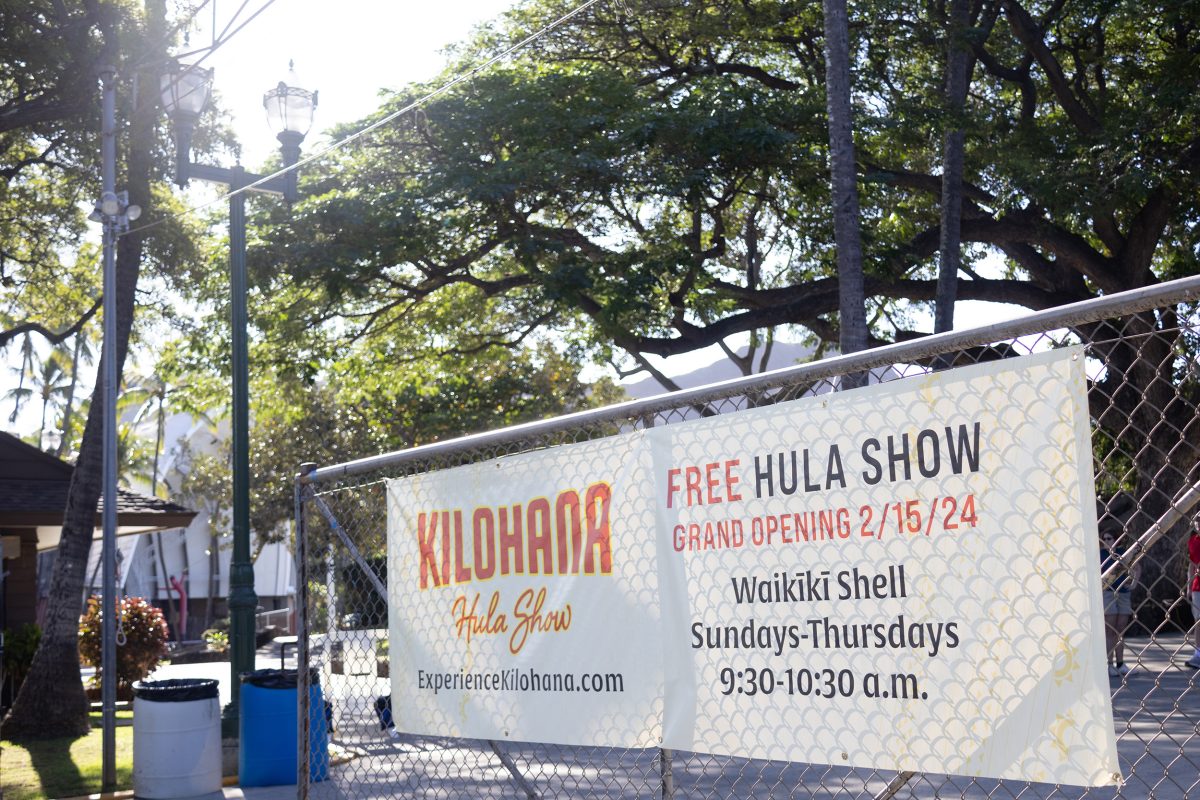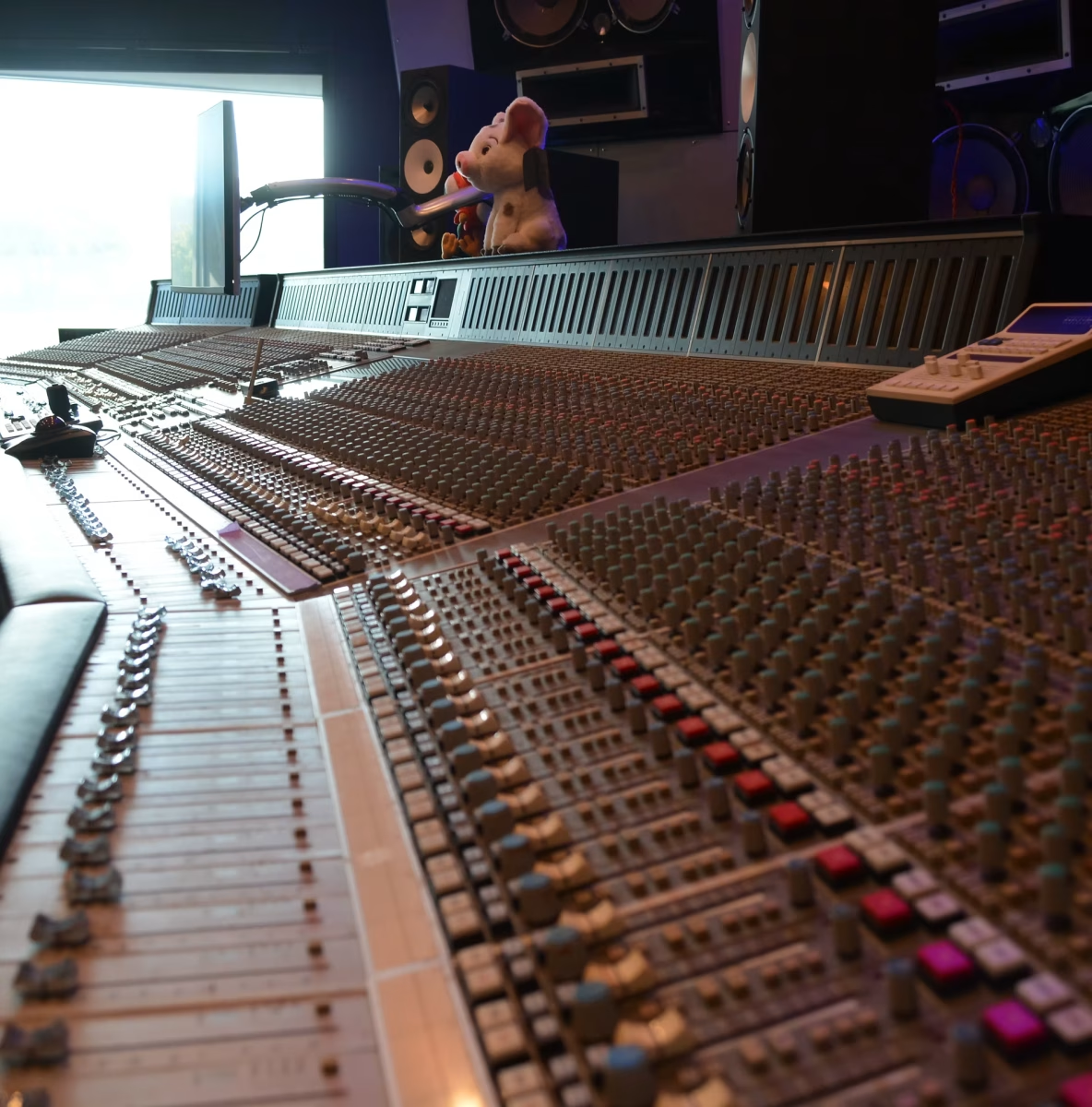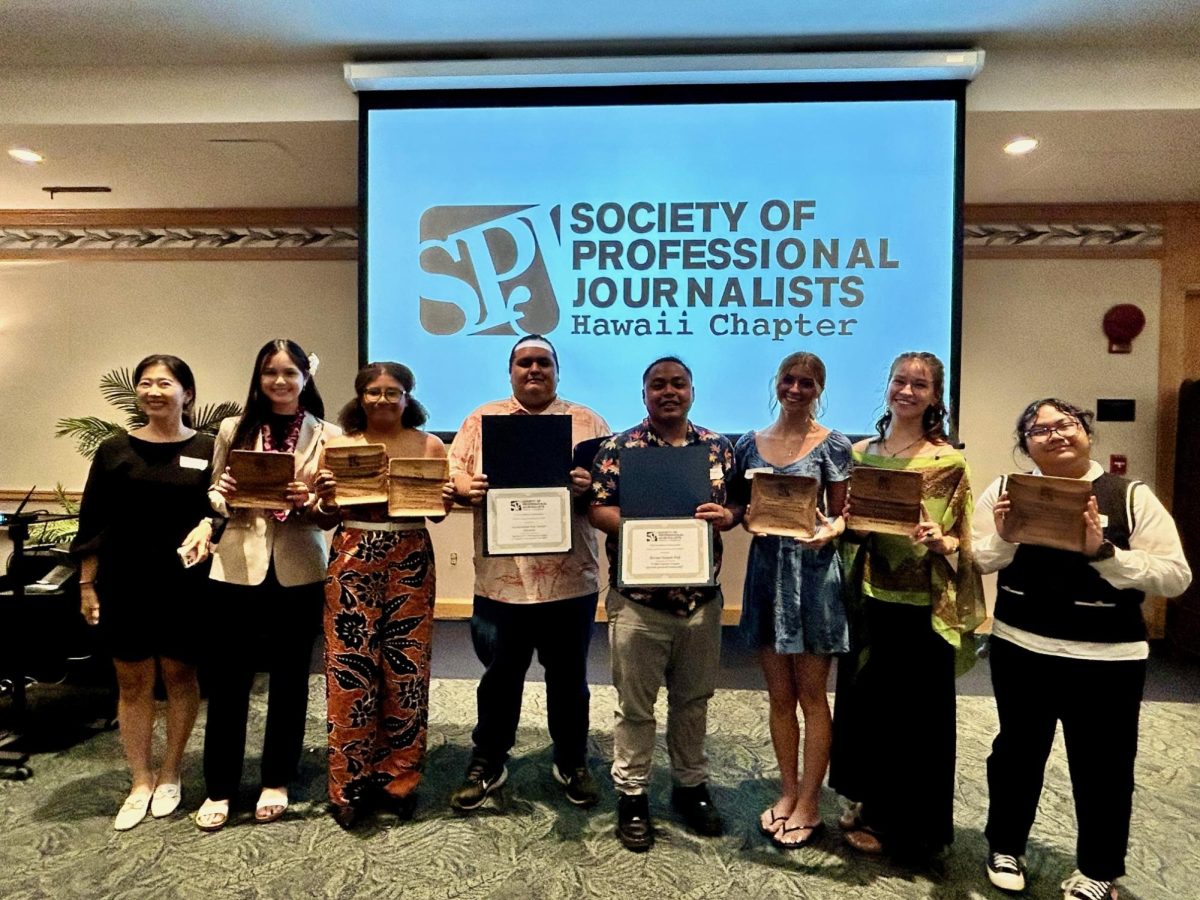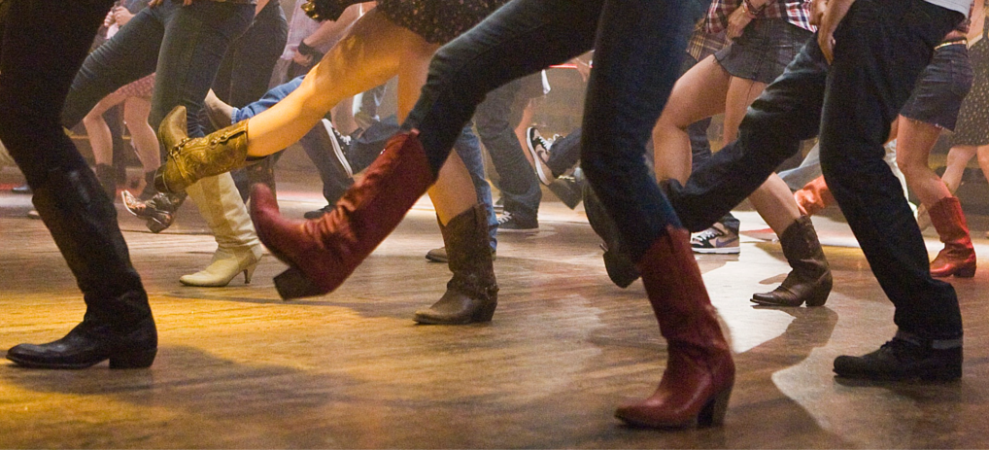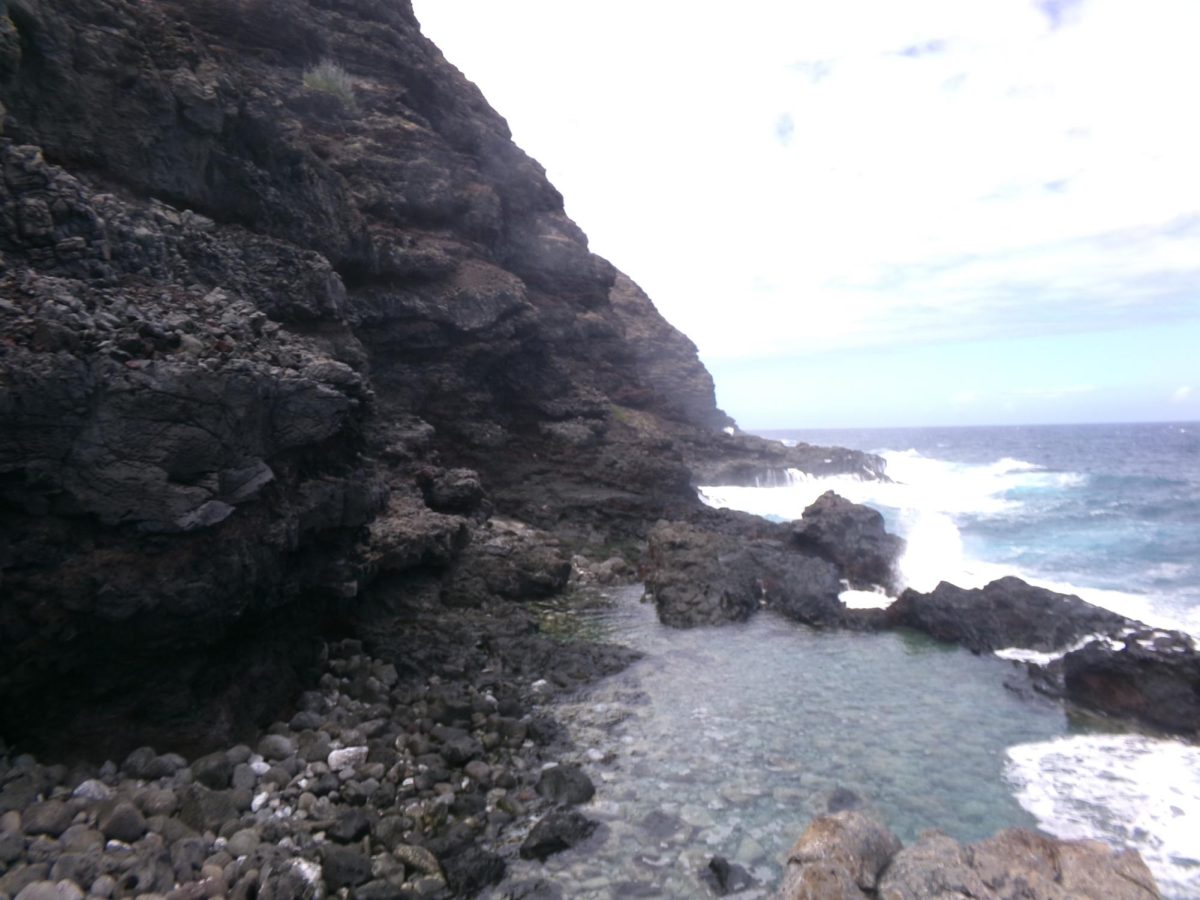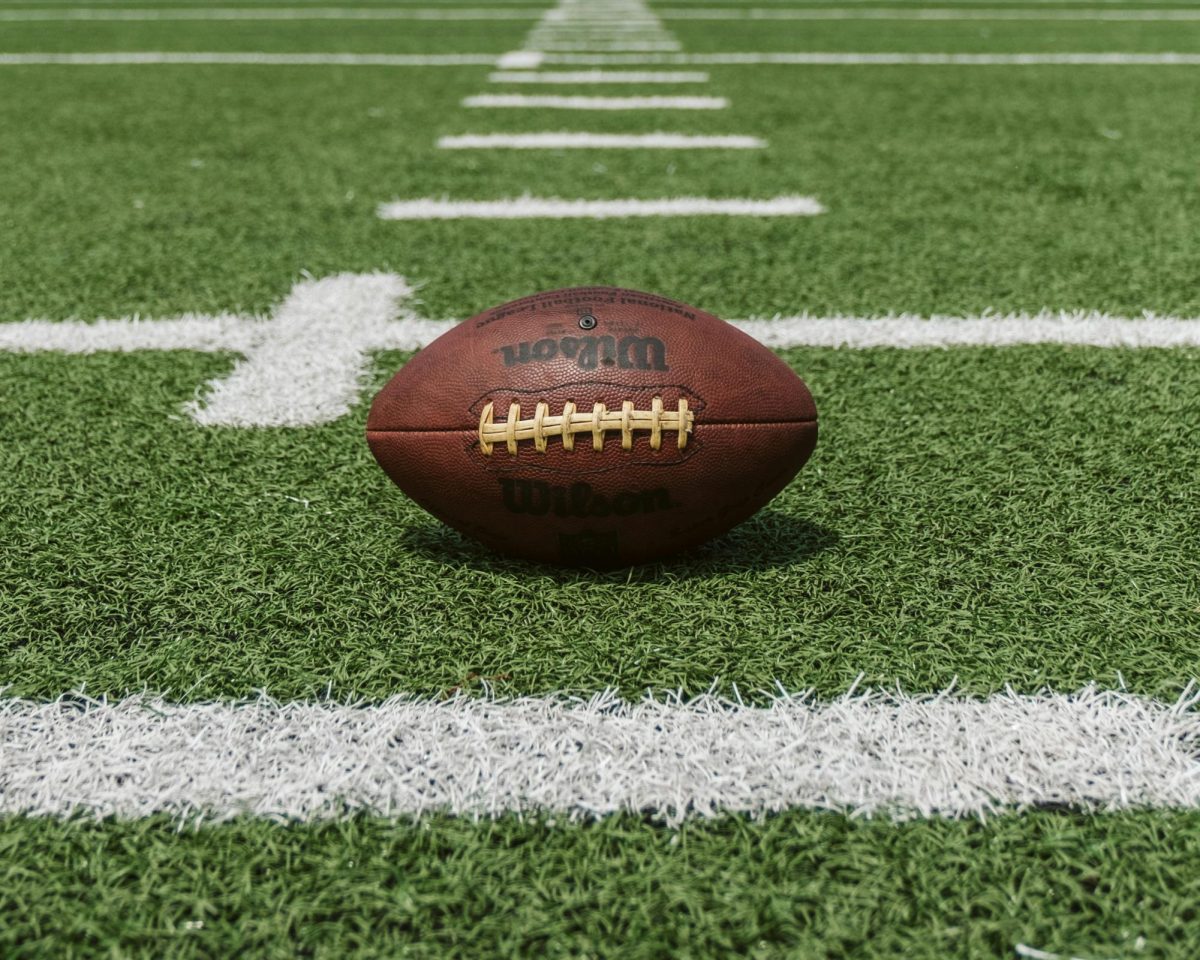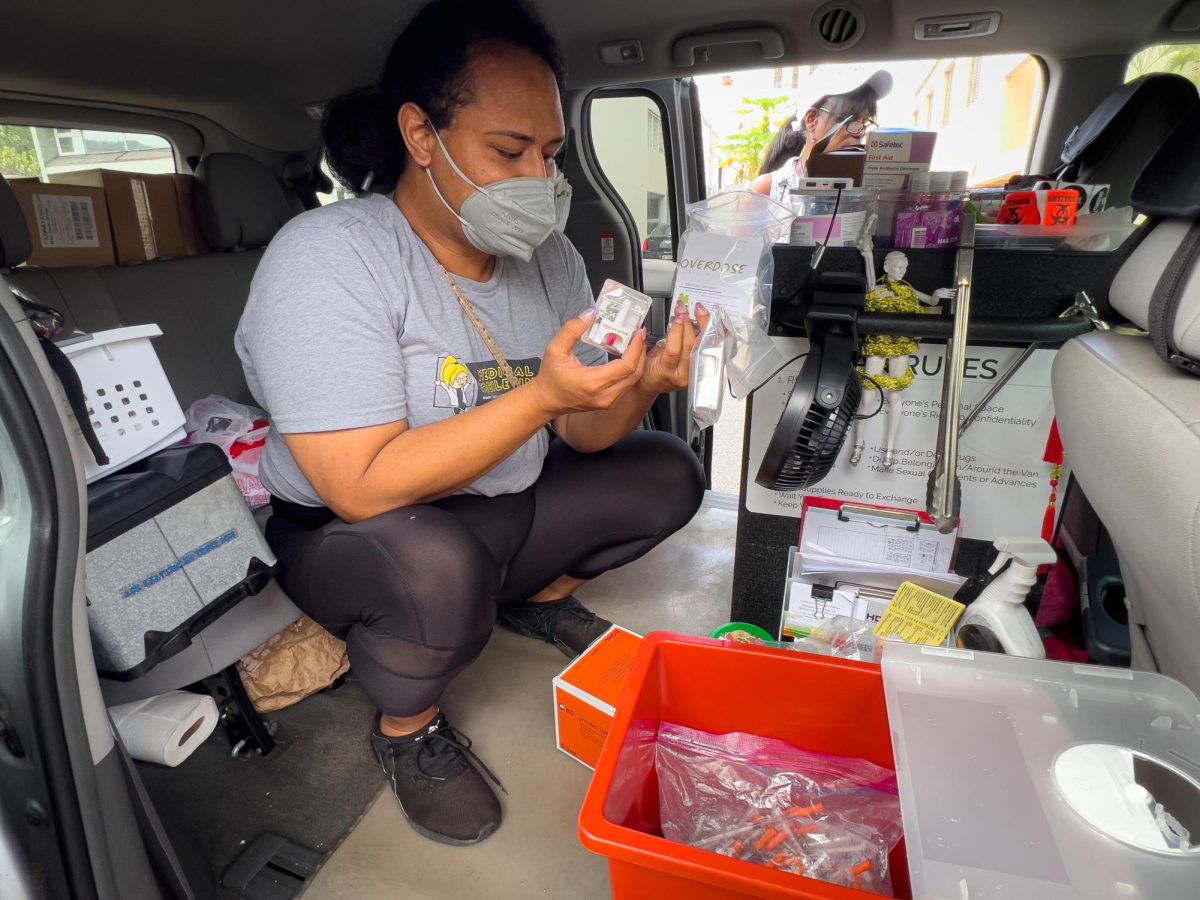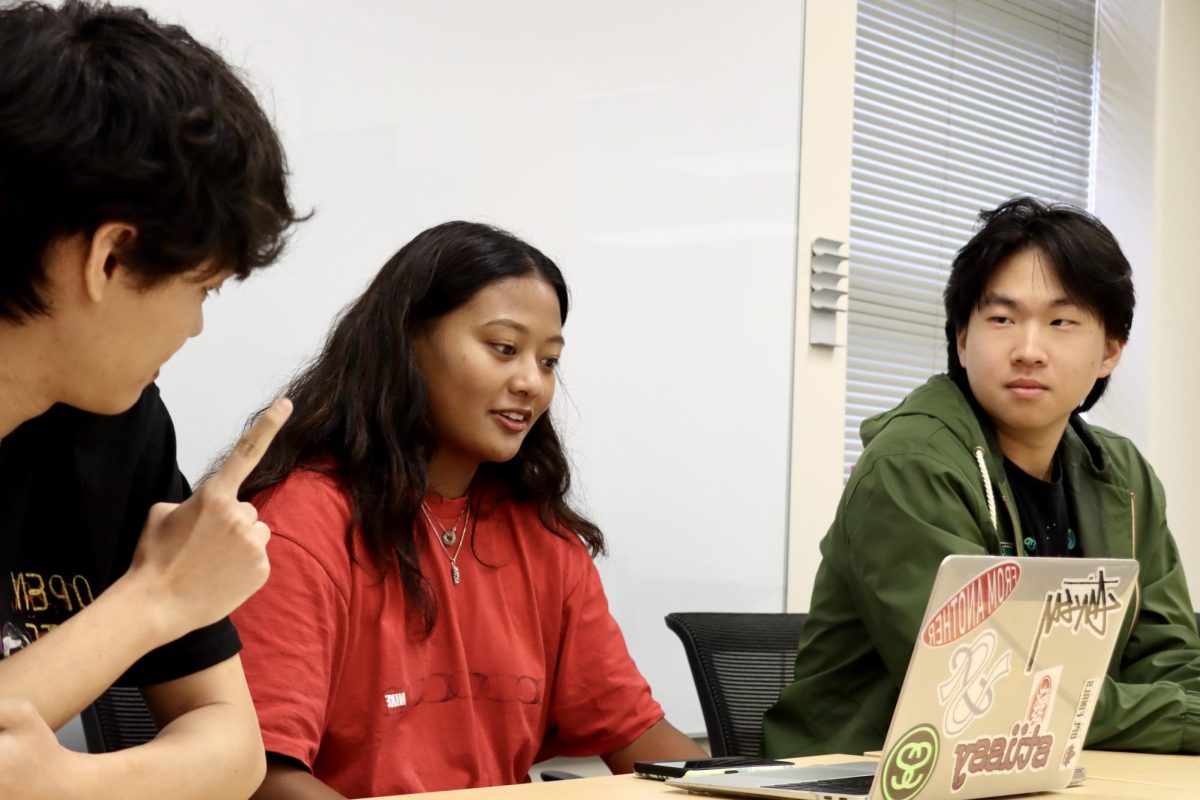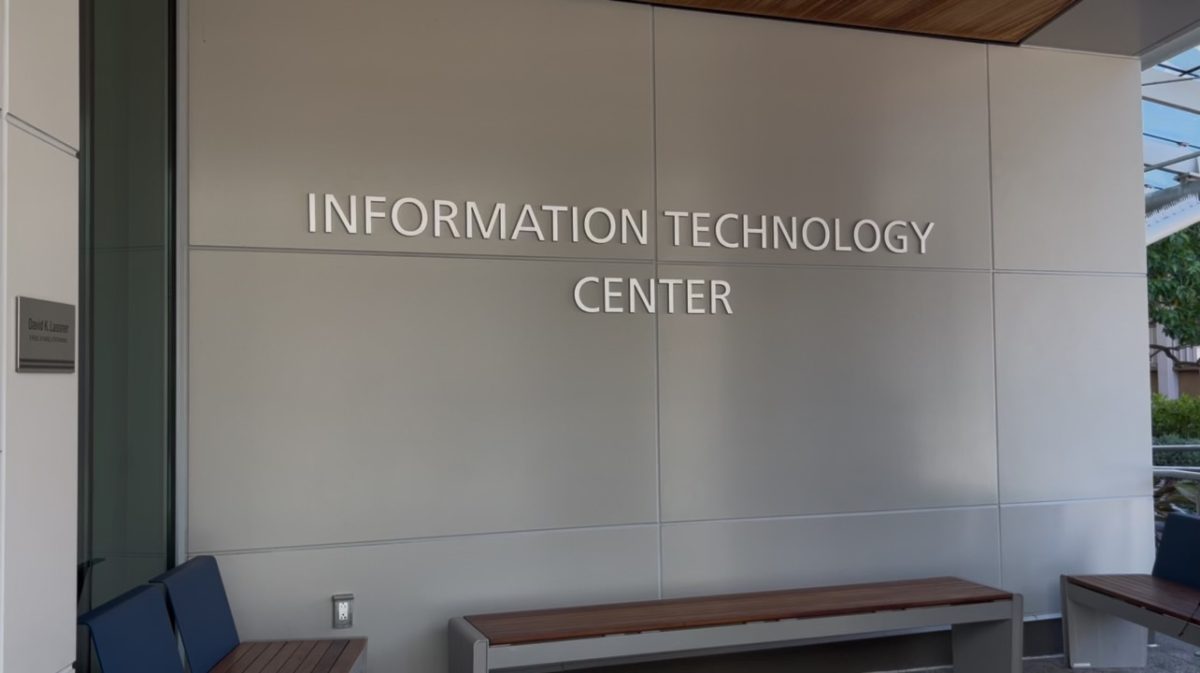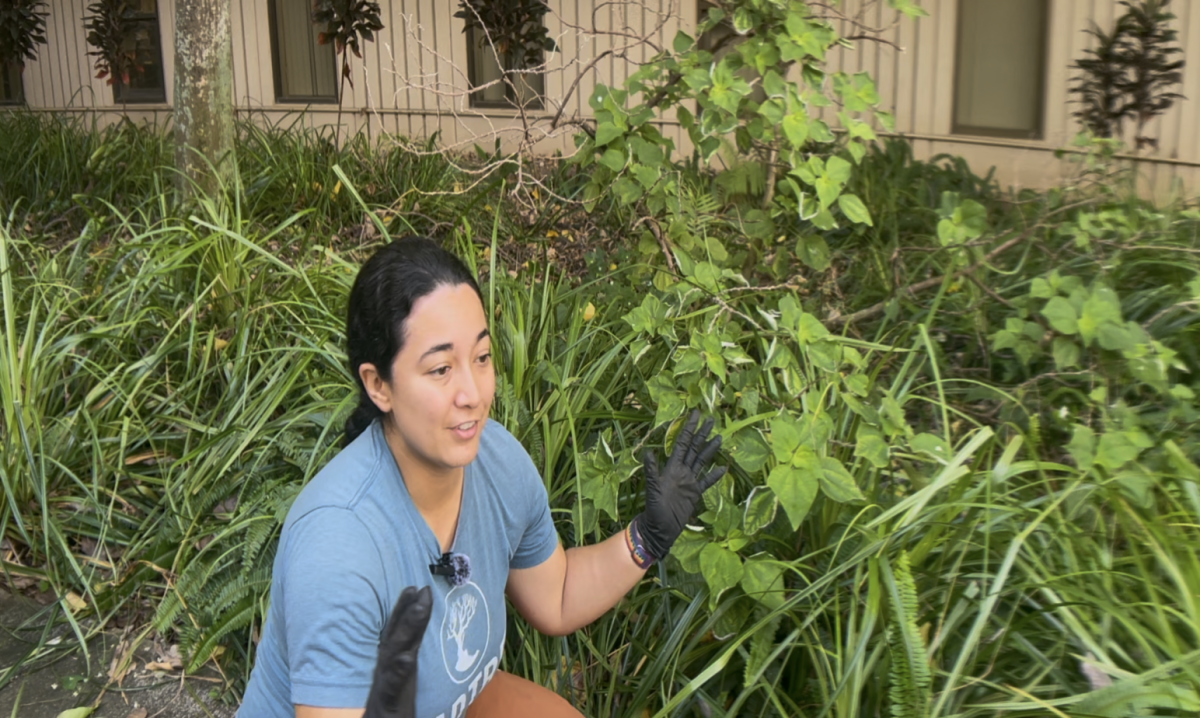As the opening of “Kawika” plays on the ipu, or Hawaiian gourd drum, the Waikīkī Shell is transformed as the sound of chanting in ʻŌlelo Hawaiʻi fills the space. The word “Kilohana” is spelled out in bright red letters vertically rising from the grass, creating a stark contrast from the hula dancers in white, swaying to the beat and chanting as they dance to this song dedicated to the Merrie Monarch himself, King David Kalākaua.
This scene is reminiscent of the Kodak Hula Show, a mainstay in Kapiʻolani Park from 1937 to 2002, with musicians dawning brightly colored muʻumuʻu in front of a grass hale and performers wearing fragrant lei and tī leaf skirts holding up the same brightly colored letters, spelling out Hawaiʻi.
The Kilohana Hula Show, two decades later, brings modern twists to contrast but also complement memories of the nostalgic Kodak performances. It also is free to the public, for the time being, while issues of long-term financial support are being worked out by city officials.
“Following the old Kodak hula show, and all those people, five, six decades of hula, it pays homage to those people,” said Kipe Ebana, entertainment director for the Kilohana Hula Show. “We live in the present, but we really dance and come from the past. We have to honor our kūpuna and honor what they do,”
Kilohana features a kūpuna line, or a group of older performers, which is uncommon in performances aimed at tourists. Many of those kūpuna are also former dancers from the original Kodak show.
“When I saw they’re looking for a kūpuna line to recreate the Kodak Hula Show, I just laughed, I thought they were joking,” said 70-year-old Kilohana Hula Dancer Paulette Watson. “Like really? They’re bringing us dinosaurs out to do this? But it’s so fun to work with these ladies and these beautiful musicians from way back when. … It’s so nice to be a part of this history now. I’m really, really happy to be a part of it.”
After a certain age many dancers are deemed “too old” to perform on stage, but Kilohana gives these older dancers and musicians a chance to return to the stage and do what they love.
“You don’t age out of the art of hula. You don’t age out of the enjoyment of sharing your musical talents and singing. And this honors the fact that you’re not too old to do it,” said Tyler Iokepa Gomes, the chief administrator for Kilohana. “It is an element that hearkens back to the old show and so many of these kūpuna have memories themselves. It only makes sense to involve them because they bring those elements of that time period.”
Audiences have been responding well to the idea, Gomes said. For example, Barbara Bellamy, a visitor from Colorado, said after a recent show, “One of the things that I appreciate so much is the elders. It doesn’t matter how shaky their voices are. Our voices get a little wobbly. The vibrato, which is what happens when our voices get older, and they’re just on it, and I love that.”
The Kodak show, founded by Fritz Herman, Kodak Hawai‘i Ltd.’s vice president, was established to give tourists the opportunity to photograph hula in Hawaiʻi. Kodak featured a variety of Polynesian dances from Tahitian, Hawaiian and Māori dancers. Kilohana focuses solely on Hawaiian hula. Kilohana, meaning the very best, seeks to show visitors and locals what the best of the best in Hawaiian hula looks like.
Representatives from six award-winning hālau, including Hālau Ka Lā ʻŌnohi Mai O Haʻehaʻe, are featured in Kilohana. In addition, Miss Aloha Hula 2023, Agnes Brown, can be seen dancing at some performances.
The hour-long show is managed by emcee Kimo Kahoano, who also has been the emcee for the Merrie Monarch Festival since 1981. Before every number, he explains to the audience the importance of the songs, and dances and gives context about the performance they are about to watch, including classic songs, such as “Lovely Hula Hands,” “Kaimana Hila,” and “Lili‘u E.”
Free admission to Kilohana is one of its most attractive qualities as well as its potential achilles heel. The Kodak was also a free hula show, but it was funded by a huge corporation, with self interests in promoting photography, and eventually that support waned. The Kilohana show costs about $8,000 a day to run the five weekly performances, with about 30 dancers each show and 15 musicians needing to be paid.
“These are practitioners. These are kūpuna. These are musicians and hula dancers who are sharing their art, their culture and their talent,” Gomes said. “Even though the show itself is free to the public, we wouldn’t be really doing regenerative tourism if we weren’t adequately honoring those skills and the culture and finding ways to pay for those dancers. … It’s about time that our brothers, sisters, cousins, aunts, uncles, tūtūs, all of them are adequately recognized for those skills, so that’s really where the bulk of those funds are going toward.”
The Council for Native Hawaiian Advancement is covering the costs associated with the show at this point, Gomes said, but in order to keep the show alive long-term, the team has started looking for alternative sources of funding.
“CNHA has the capacity to, at the moment, continue to fund this,” Gomes said. “To make sure that it doesn’t follow the same fate of something like Kodak, we absolutely have to think of other streams of revenue, because it’s not free to run this. That said, we’ve obviously contemplated evening events, ticketed events to help pay for the show, and that’s in development.”
The Council for Native Hawaiian Advancement is looking into possibly opening a night market, modeled after their online marketplace Pop-Up Mākeke, Gomes said, selling locally made products to help fund the Kilohana Hula Show.
“I think there is an opportunity for discussions with the city, who does manage the show property, in having Mākeke (at the Waikīkī Shell), so that we can provide our visitors an opportunity to, again, spend their dollars in places we want them to. They can either go and shop for tchotchkes that are produced by who knows in other parts of the world, or they can have an opportunity to invest their dollars right back into local product makers. We know these are going to local families right as part of this idea of regenerative tourism, also supporting a circular economy.”
About a month in, Kilohana has been attracting 400 to 500 attendees at every show, Gomes said, and he considers the attendance strong.
“This is kānaka in 2024 designing these things for themselves, being the ones at the table, having the discussions, controlling the narrative,” Gomes said. “We want to empower our younger generations and also feel like they have opportunities to come to the table, whether it’s in the visitor industry or not, to create things that are reflective of where we are now as a people and what our art looks like.”
